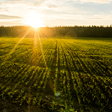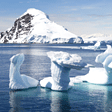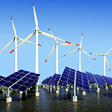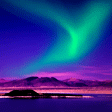- Home >
- Our Actions >
- Ambassador report
1
Comments
What are wetlands and where can they be found |
|---|
|
by Razaan Abakar | 22-03-2018 16:26
|
|
Appreciating WetlandsSwamps, marshes, bogs, and fens, known collectively as wetlands, are ecosystems that straddle the boundary between land and water. Irrespective of its vegetation, every wetland overlies a substrate that is either saturated with water or entirely flooded for at least part of the year. Wetlands occur within all types of ecoregions. Most aren't large enough to be indicated on small-scale maps, but some are quite extensive. Swamps are simply flooded forests or woodlands. Freshwater swamps may line the banks of rivers or grow in their floodplains. Others may stand at the margins of lakes or in the basins of former marshes or ponds that are in transition to dry land. Examples of major swamplands are the flooded várzea and igapó forests of the Amazon region, the Okefenokee and Big Cypress swamps and the Mississippi River bottomlands of the United States, and the swamps of the Congo Basin and the Niger Delta in Africa. Mangrove swamps grow in estuarine or coastal situations, so it is brackish or salty water that inundates the roots (and sometimes the trunks and crowns) of the trees at high tide. The species of mangroves belong to a number of different families, but all have evolved to tolerate growing with their feet in salt water. Mangrove swamps are widespread in the tropics and subtropics, where they are best developed in river deltas, in the lee of coral reefs or islands, and along broad and gently sloping shores. A significant mangrove swamp is the Sundarbans of Bangladesh, where the Ganges River empties into the Bay of Bengal. Other major mangrove belts are in the Philippines, New Guinea, and Belize. In marshes, the dominant vegetation is herbaceous rather than woody. If a swamp is a flooded forest, then a marsh is a flooded grassland. Freshwater marshes fringe the shores of many lakes and streams, and may form in any shallow depression in which water collects. Marsh vegetation is emergent—the stems and leaves of the plants stick out above the water surface. Perennial marshes remain wet through the year, but other marshes are ephemeral, flourishing during the season when water is available and then drying up. The Sudd of southern Sudan is an enormous marsh, as are the Okavango Delta in Botswana; the llanos of Venezuela; the Pantanal of Brazil, Bolivia, and Paraguay; and the Everglades of southern Florida in the United States. The northern Great Plains in Canada and the United States are freckled with prairie potholes, the marshes of which are the breeding grounds for most of the continent?s ducks. Just as swamps may develop in salty or brackish water, so too may marshes. The salt marshes of the temperate zone replace the mangrove swamps of the subtropics. These marshes are among the most productive ecosystems on earth. Their influence is far-reaching: Coastal food chains are based on organic detritus from the marshes, and many of the fish and shellfish nourished offshore will return to the marshes to breed. Most salt marshes are situated along coasts, but some develop inland, especially in desert areas. The marshes of The Wash in eastern England, the Camargue in southern France, and the Coto Doñana in southwestern Spain are extensive, as are those of Chesapeake Bay in the United States. Bogs and fens—together called mires—are wetlands that develop over peat, the partly decomposed remains of mosses and other plants. In contrast, the soils on which swamps and marshes develop are composed of minerals, with more or less organic humus mixed in. Peat-based wetlands are especially widespread in cool, damp boreal regions with a high water table and poor drainage. In bogs, sphagnum and other mosses are the dominant vegetation. Because they are watered principally by rain, which is low in nutrients, bogs are infertile places, and some species of plants supplement their diets by trapping and digesting insects. Fens, in which sedges, grasses, and rushes dominate, are kept wet by seeps, springs, or streams, and are more fertile than bogs. The Atlantic heath region of the British Isles and Scandinavia is famous for its blanket bogs, but it cannot compare in extent to the vast peatlands of western Siberia. Because wetlands are intermediate between land and water, and because their aspect may differ radically from season to season, they are not always easy to distinguish. A meadow grades into a marsh, and a marsh into a pond, which is a shallow, water-filled basin vegetated across its entire bottom with plants that are entirely submerged or have leaves that float at the surface. A marsh, bog, or fen may be invaded at its margins by trees and may evolve in time into a swamp, and later, perhaps, into an upland forest. Particularly in industrialized countries, wetlands have historically been considered impediments to development, to be drained, filled, and converted to a ?useful? condition. More enlightened attitudes now prevail, and the enormous value of wetlands—from providing natural flood control and water filtration services to supporting populations of fish and wildlife on which people depend for food, employment, and recreation—is increasingly appreciated. Source: Encarta Interactive World Atlas
|
|
|










 Previous : Wetland and water in Nepal
Previous : Wetland and water in Nepal









1 Comments
Hello Razaan!!
This report elaborates well about the features of swamps, marshes, bogs, and fens. It also reminds us how valuable wetlands are and the misconception that underlies due to industrialization
'Particularly in industrialized countries, wetlands have historically been considered impediments to development, to be drained, filled, and converted to a ?useful? condition. '
Wetlands aren't obstacles to development, they are a valuable resource from our mother nature. More enlightened attitudes towards wetlands value and its conservation is needed!!
Thanks for the report :)
Posted 23-03-2018 22:41